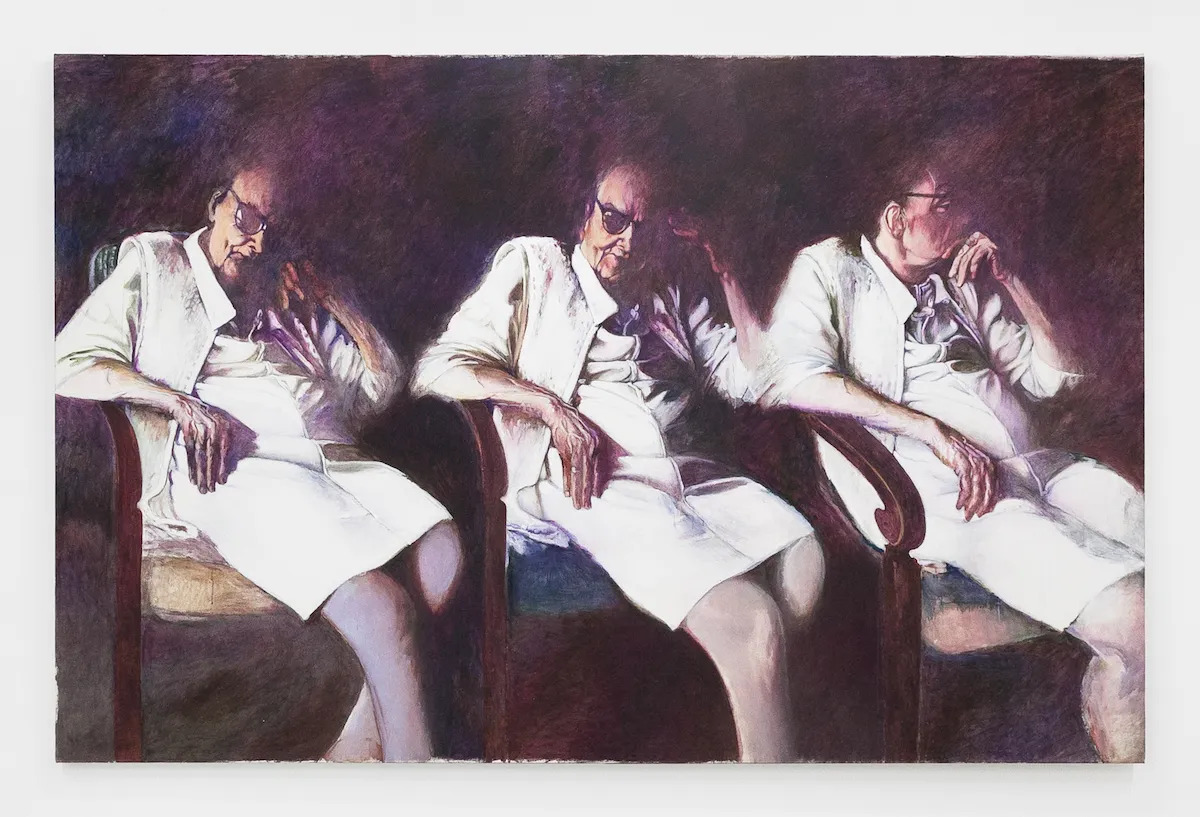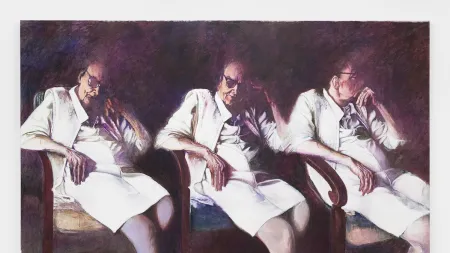
It’s the golden age of the golden years. There are double the number of centenarians in the United States from 20 years ago. A quarter of US lawmakers are over the age of 70, on trend with a generally aging population.
The effect has been making itself clear in the culture, from the sports comedy 80 for Brady to 81-year-old Martha Stewart’s Sports Illustrated cover to the new reality TV show Golden Bachelor.
The portrait being painted here isn’t such a happy one. Politically, it’s a bit nightmarish, as Senator Dianne Feinstein died at her post in September after observers repeatedly sounded the alarm that she was no longer fit to serve in office. Culturally, it’s not great either. For all the insistence that these cultural artifacts demonstrate the possibility of a rich and sensual life for women aged 50 and older, it’s contingent on embodying the particular glamor of youth, whether eliminating wrinkles with plastic surgery or running after a man in stilettos in some echoing mansion in Los Angeles.
Can we imagine an alternative where aging is celebrated without being tied to narrow definitions of power and sex appeal? This is the question a group show at New York’s Ryan Lee Gallery implicitly asks. Titled “Can You See Me Now?” the show brings together paintings that represent the aging cisgender female body with a caring gaze that is seen all too rarely in art spaces. The 11 artists included, among them Joan Semmel, Hung Liu, and Samantha Nye, focus on both themselves and their beloved friends, and find much to celebrate.

The show, cocurated by Ryan Lee cofounder Jeffrey Lee and artist Clarity Haynes, was catalyzed by Lee, who has been stewarding the late May Stevens’s estate since her death in 2019. It struck Lee that over the course of Stevens’s career, all her major bodies of work have been lauded, collected, and placed in cultural institutions—except those that depict her aged mother, Alice Stevens. The works were powerful, so why had they never found a response? Lee guessed it might be because the subject was an old woman.
“What’s kind of shocking is that very few artists have grappled with the subject matter in a meaningful way,” Lee said, contextualizing his comment in the long history of nudes depicting women in the Western canon of painting. “We’re so ingrained with this notion of the male gaze that even a lot of women are super critical of aging.”
Haynes paints the nude torsos of women and genderqueer people, many of whom are on the older side. He asked her to help curate a show about aging that would include her own work, and she was only too happy to oblige.
“When he told me he was doing this, I was like, ‘Are you serious?’” Haynes said in an interview with ARTnews. “Do you know how rare it is that anyone is interested in this, especially in this art market, which is completely obsessed with youth and beauty and this whole ‘ultra-contemporary’ phenomenon?”
One doesn’t realize how little is seen of the aging body until confronted in this way. That surprise quickly melts into a sense of relief and curiosity.
Stevens’s painting of her mother, A Life (1984), has a cinematic quality. It features a series of images: one shows Stevens’s mother asleep in a chair, followed by another in which she is pictured grimacing and awake. In that last frame, she is lucid, gazing at something outside the confines of the canvas. As she wakes, Stevens’s mother goes from sad old object to fully embodied subject, keen and self-possessed.
Meanwhile, selections from Samantha Nye’s series “Entertainment for Men” (2006–12) takes a more seductive tack. In these works, Nye fits her aged subjects—her grandmother’s friends in an elderly Jewish enclave in Florida—in poses and outfits from ’80s-era Playboy magazines. They meet their viewers’ eyes. Some are meek; others, bold. All are in various states of undress and marked all over with liver spots. Glamorous, yes. Artificial? Never. We are far from the reaches of The Golden Bachelor.
Haynes partly credits this more expansive view of aging womanhood to the queer, feminist perspective she and other lesbian painters, among them Nye, Angela Dufresne, and Mala Iqbal, brought to the show. For her part, Haynes started her series of torso portraits after immersing herself in the queer and feminist communities of the ’90s. The liberated atmosphere pushed Haynes to view bared breasts and flabby flesh as a form of freedom.

As for painting older subjects, Haynes said she delights in the extra “data” that aging skin has to offer. In her painting Brenda (2020), which is on view in the show, a pair of breasts land at the midpoint of a belly that is creased with stretch marks. The visible blue and purple veins in this stomach might turn off some viewers, but Haynes said they are what makes a work like this one engaging for her.
“The lesbian community has a real acceptance for different body types and a real love for aspects of the body that I think that the cis-male dominated art world doesn’t often have access to,” she said. But because many collectors, curators, and dealers have historically been men, a limited acceptance has shaped careers and canons. Haynes thinks that because her work doesn’t cater to that male audience, it isn’t as successful as it could be. She’s not alone in feeling that way.

Nye told ARTnews that she’s consistently gotten the advice to feature more youthful bodies in her paintings, which are typically populated with older women making love or self-pleasuring in utopian landscapes. The unfortunate truth embedded in this advice reared its ugly head when Nye was showing her paintings in a solo booth presentation during the Armory Show.
“There was this woman who was really interested in my paintings but her husband essentially put his foot down. She said something like, ‘Oh, I love this work but my husband just can’t look at old bodies like that,’” Nye recounted over the phone. “It was actually quite devastating to hear that. It just reverberates loudly on so many levels.”
It’s for this reason that Haynes and Lee hope to expand this show in the future.
“I’m really eager to see how the show can be expanded and rejiggered in the future,” Haynes said. She would like to see a version that goes beyond representational paintings and is more inclusive of non-cisgender bodies. “There are so many interesting histories that go into how people represent themselves and how they represent age. I’d like to see it all.”
Correction, 10/17/23, 2:55 p.m.: A previous version misstated Mala Iqbal’s first name. It is Mala, not Molly.
Musée d’Orsay Exhibition Spotlights the Last Two Months of Van Gogh’s Life, Bringing to Light His Final Obsessions
Tania Bruguera Exhibition in Chile Becomes Ensnared in Battle Over Former President’s Legacy

Comcast’s CEO Just Snagged a $9 Million Penthouse at One of L.A.’s Most Exclusive Buildings

The Foggy Future of Farfetch

I’m dumping my iPad Air for the iPad mini

Max Verstappen Seeks 50th F1 Win at U.S. Grand Prix in Austin


